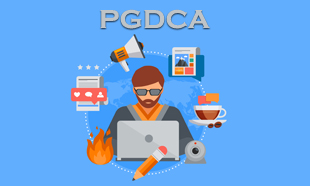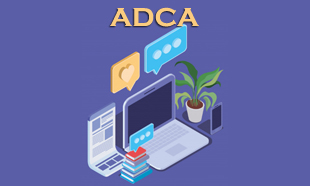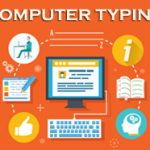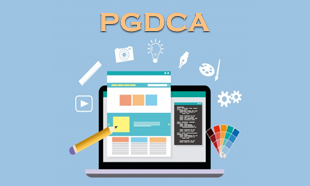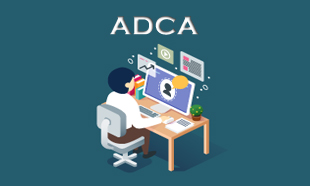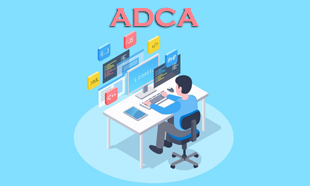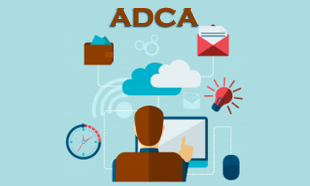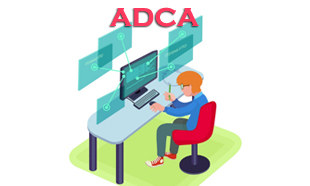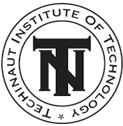Instructors
DESKTOP PUBLISHING
TECHINAUT INSTITUTE OF TECHNOLOGY present DESKTOP PUBLISHING offline or classroom computer course in association with our Computer Institute Franchises THE GREEN MIND located in AKORHI GOLA, ROHTAS, BIHAR. TECHINAUT provide Best Computer Institute Franchises services near your locality. THE GREEN MIND is one of the best computer courses provide in ROHTAS, BIHAR.
THE GREEN MIND
THE GREEN MIND is TECHINAUT INSTITUTE OF TECHNOLOGY computer center franchises located in AKORHI GOLA, ROHTAS, BIHAR, INDIA, PIN 821301. To know more about our IT training center and computer courses at on our study center, please visit us on the given address or email us on sahajgreen@gmail.com or info@techinaut.edu.in
“DESKTOP PUBLISHING” SYLLABUS
This is a revised and updated version of TECHINAUT INSTITUTE OF TECHNOLOGY syllabus of DESKTOP PUBLISHING. This DESKTOP PUBLISHING syllabus is designed to facilitate students to develop a practical approach to solve DESKTOP PUBLISHING solution.
DTP, which is popular and short form of Desk Top Publishing is one of the major sources of self-employment in our country. Any student can start his or her career in DTP and rise to become a professional graphic designer or even animator. For DTP, several-application software viz. PageMaker 7, MS Word, CorelDraw, PhotoShop, Illustrator and Quark Express etc are in use.
DTP started in 90s in our country. In early years software was not as powerful and Windows was only a mother software for DTP programs and, not an operating system. With the introduction of Windows 95, the complete structure of DTP got changed. Today, the DTP done on PCs is no less than the one time very powerful and unique MAC system. Presently XP and Vista versions of Windows are being used as main application software besides an operating system. The processing speed of the PC has gone into gigahertz; main computer memory has increased to hundreds of megahertz. Secondary memory to store data, which we call hard disk is now available in hundreds of GBs. With such huge developments in the field of hardware, you can imagine how powerful the DTP has become in current times.
THE OBJECTIVE OF THE COURSE
The goal of this course is to present an overview of DTP.This course has been designed strictly according to the requirements of those students, studying in various government and non-government institutions or searching for a job or self-employment. Description of the latest version of DTP software which is currently in use has been given in a very simple language. DTP Fundamentals, Computer Fundamentals, and various printing techniques have also been explained so that students can make their career and enter in DTP profession with full maturity.
TABLE OF CONTENT
SECTION 1: COMPUTER FUNDAMENTALS (10 HRS)
a. What is Computing?, Computer hardware, Computer Software
b. Application Software, System Software, Operating System
c. Input/Output Devices, Computer Keyboard, Computer Mouse
d. (OCR) Optical character recognition, What is OMR?, MlCR
e. Graphics tablet or Digitizer, Computer Scanner, The Magnetic storage
f. Hard Disk, Hoppy disk, CD, DVD, Computer Printer
g. Bit and Byte, RAM, ROM and ASCII, Computer Networking
h. The Internet, E-Mail, WWW
SECTION 2: OPERATING SYSTEM: DOS AND MS WINDOWS XP (15 HRS)
a. DOS (Disk Operating System), DOS Interface and Commands
b. Microsoft Windows
c. Customizing Desktop, Choose a new desktop theme
d. To change your desktop background, To change your Window fonts
e. To change your screen resolution, To put a shortcut on the desktop
f. To move the taskbar
g. To remove unused desktop icons
h. To add selected items to the Start menu
i. To set or change a screen saver, To change your screen resolution
j. To show Control Panel in My Computer, To add or remove a Windows component
k. To display hidden files and folders, Control Panel
l. To view a font on your computer
m. To add a new font to your computer
n. Using Character Map, Printing extended or international characters
o. To connect a printer directly to your computer
p. To view documents waiting to print, Stop printing your file
q. To cancel printing a document, To change printing preferences
r. To set printer memory
s. To add a port
SECTION 3: PRINTING PROCESS (5 HRS)
a. History of Printing, Phaistos Disc
b. Woodblock printing, Movable type, Flat-bed printing press
c. Lithography, Chromolithography, Screen-printing
d. Offset press, Hexography, Photocopier, Thermal printer
e. Laser printer, Digital printing, 3D printing
SECTION 4: DTP FUNDMNENTALS (10 HRS)
a. Hardware and Software
b. Main elements of DTP, Halftone Dots and Dithers
c. CMYK, ROB and Spot Colour
d. Pixels and BitInaps
e. Vectorised Graphics, Printing presses
f. Vector and BitInap images, Image output and Resolution
g. DTP terminology
SECTION 5: USING MS WORD (10 HRS)
a. Create a document, Open a fIle
b. Save a document
c. Save a ffie to another fonnat, Change page margins
d. Select page orientation, Create a new style
e. Modify a style, Delete a style, Select text and graphics
f. Select items that aren’t next to each other, Move or copy a single item
g. Find text, Replace text
h. Insert a symbol, Insert a special character
i. Automatically hyphenate all of a document
j. Manually hyphenate all of a document
k. Apply bold formatting, Apply embossed, engraved, outlined, or shadow fonnatting to text
l. Apply or remove highlighting, Remove fonnatting from text
m. Make text superscript or subscript, Change line spacing
n. Align text left or right, Center text, Create a fIrst-line indent
o. Increase or decrease the left indent of an entire paragraph
p. Crop a picture, Print a document, Preview a document, Print a range of pages
q. Print only odd or even pages, Print more than one copy at a time
SECTION 6: ADOLJE PAGEMAKER (50 HRS)
a. Using the toolbox
b. Viewing pages, Choosing preset page views
c. Working with text and graphics, Selecting objects
d. Understanding text objects, Identifying a text object
e. Selecting text with the text tool, Editing text
f. Moving between pages, To move between publication pages:
g. Adding and deleting pages
h. Correcting mistakes, Undoing changes and reverting publications
i. Creating a publication from scratch
j. To open a publication
k. To name and save a pUblication for the fIrst time
l. To specify a Save Option preference, Setting up pages
m. To set up a new publication
n. To set margins, Changing Document Setup options, Using Master pages
o. To select a measurement system and set the vertical ruler
p. Using the zero point, Nonprinting guides
q. To set up columns on a page
r. To create different column setups on the same page
s. Setting up ruler guides
t. Numbering pages
u. Creating text blocks
v. To create a text frame, To add text to a frame, To attach a text block to a frame
w. Formatting text
x. To check spelling in one or more publications
y. To edit a track, To align a paragraph, To specify leading
z. To draw a line or a constrained line, To draw a rectangle or a square
1a. To draw an ellipse or a circle
1b. To draw a polygon, To round rectangle comers
1c. To tum a basic shape into a frame
1d. Duplicating an object, To copy and paste an object
1e. To paste several copies of an object, To change the stacking order of objects
1f. To delete an object, Control palette basics
1g. To move an object using the Control palette, To move an object using the arrow keys
1h. To resize an object using the Control palette
1i. Grouping and ungrouping objects, To group objects
1j. To select text or an individual object within a group, To ungroup objects
1k. Rotating an object
1l. Reflecting an object
1m. Skewing an object, Cropping a graphic
1n. To wrap text around a graphic
1o. Printing in PageMaker
1p. Printing booked publications
SECTION 7: QuarkXPress (30 HRS)
a. Creating a New Document
b. Saving a Document
c. Creating master pages, Default master pages, New master pages
d. Numbering Pages, Automatic page numbering, Sectioning a document
e. Text Boxes, Creating Text Boxes, Activating a text box
f. Drag and Drop Text
g. Applying Character Attributes, Alignment for Paragraphs
h. Creating Drop Caps, To create a drop cap, First Line indent
i. Locking to Baseline Grid, Inserting Space Before or After a paragraph
j. Anchoring Rules to Paragraphs
k. Style Sheets, Creating and Editing Style Sheets, Appending Style Sheets
l. Picture Boxes, Creating picture boxes, Changing box shape
m. Importing Pictures, Importing Bitmap, TIFF (.TIP, .CT), EPS, and WMF pictures
n. Listing and Updating Pictures, Setting pasteboard width, Using pasteboard area
o. Working with Lines, Running Text Around Items and Pictures
p. Creating groups, Grouping items
q. Dialogue boxes, Measurements palette, Rotation tool
r. Preparing a Printer, Configuring a Printer, Using Printer Setup
s. Selecting an lmagesetter, Using Printer Setup
t. Printing a Document, Printing Pictures, Printing Colour Separations
SECTION 8: USING CORELDRAW (50 HRS)
a. CorelDRAW terminology and concepts, CorelDRAW application window
b. CorelDRAW workspace tools
c. Exploring the toolbox
d. To start CorelDRAW, To open a drawing
e. Working with templates
f. Undoing, redoing, and repeating actions, Zooming and panning
g. Saving drawings
h. Lines, Outlines and Brush Strokes
i. Drawing rectangles and squares
j. Applying uniform fills
k. Applying pattern fills
l. Working with color
m. Understanding color models, CMYK color model
n. RGB color model, Grayscale color model, Using Special Effects
o. Applying a transparency
p. Using Text in Drawing
q. Fitting text to a path
r. To straighten text
s. Adding bitmapped images
t. Print a Drawing
u. Commercial printing
SECTION 9: ADOBE ILLUSTRATOR CS (40 HRS)
a. Work area, Menus, Tools
b. Palettes, Artboard, Using tools and commands, Using tools
c. Changing the tool pointer, Using tool tips, Choosing commands
d. Using palettes, Showing and hiding palettes, Viewing artwork
e. Using the Navigator palette
f. Displaying the Navigator palette
g. Viewing artwork as paths, Previewing how artwork will print
h. Using the status bar, Undoing and redoing changes
i. Using the Preferences dialog box
j. Using plug-in modules
k. Exiting illustrator, Creating new documents
l. To open an existing file, To show or hide rulers, To change the ruler origin
m. To create a ruler guide, To convert an object into a guide object
n. Using the Info palette, Displaying the Info palette
o. Placing artwork, To place artwork into an illustrator document
p. Drawing in Adobe Illustrator CS
q. Drawing paths
r. Adjusting paths
s. Using Colors and Fills
t. Converting strokes to filled objects
SECTION 10: ADOBE PHOTOSHOP CS (50 HRS)
a. Launching Photoshop
b. Using the tools, Using palettes
c. Correcting mistakes
d. Using the History palette
e. Creating new images
f. Opening hnage fIles
g. Saving image rues
h. hnage selection
i. Make color and tonal adjustments
j. Shapes and paths
k. Creating paths
l. Using Paintbrush tool
m. Using the Eraser tool
n. Apply a gradient fill
o. To add intermediate colors to a gradient
p. To use the Paint Bucket tool
q. Filling and stroking selections and layers
r. To fIll a selection or a layer with a foreground or background color
s.To fIll the work canvas
t. To stroke a selection or layer
u. To stroke a path
v. To fill a selection with a pattern
w. Choosing foreground and background colors
x. To select the foreground or background color
y. To display the Swatches palette
z. To change how swatches are displayed
1a. To select a foreground or background color
1b. Using the Layers palette
1c. Displaying the Layers palette
1d. Using the Layers palette menu
1e. Changing the size of layer thumbnails
1f. Creating layers and layer sets
1g. Background layer
1h. To convert a background into a layer
1i. To convert a layer into a background
1j. To create a new layer or layer set and specify options
1k. To convert a selection into a new layer
1l. To create a new layer set from linked layers
1m. To add new or existing layers to a layer set
1n. To view nested layer sets
1o. To select layers directly in the document window
1p. To duplicate a layer or layer set within an image
1q. To duplicate a layer or layer set between images
1r. To create a new document from a layer or layer set
1s. To link layers, To unlink layers, To align the contents of layers
1t. To lock all properties of a layer or layer set, To partially lock a layer
1u. Deleting layers, To delete a layer or layer set, To delete linked layers
1v. To delete hidden layers, Merging and stamping layers
1w. To merge two layers or layer sets
1x. To stamp layers, To stamp linked layers, To stamp all visible layers, Flattening all layers
1y. To flatten an image, Setting layer opacity
1z. To specify opacity for a layer or layer set, Choosing a blending mooe
2a. To specify a blending mode for a layer or layer set
2b. Masking layers, To add a mask that shows or hides the entire layer
2c. To add a mask that shows or hides a selection, To edit a layer mask
2d. To select and display the layer mask channel, To disable or enable a layer mask
2e. To change the rubylith display for a layer mask, Creating clipping masks
2f. Ta create a clipping mask
2g. To remove a layer from a clipping mask, Using Filters in Photoshop
2h. To apply filters, Filter performance
2i. Printing in Photoshop, Types of images
2j. Halftoning, Color separation, Quality of detail, Printing by a desktop printer
2k. Printing images
2l. To print an image with its current options, To set printer and page setup options
2m. To reposition an image on the paper, To scale the print size of an image
2n. To print vector data, Preparing images for press
2o. To set output options
2p. Duotones
Lectures = 130 HRS
Practical/Tutorials = 130 HRS
Total = 260 HRS
Course Reviews
No Reviews found for this course.



